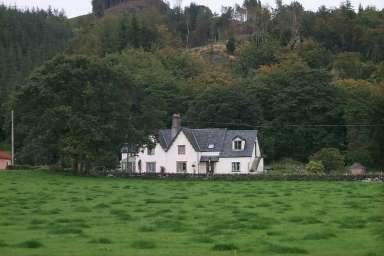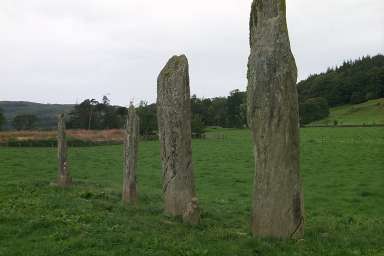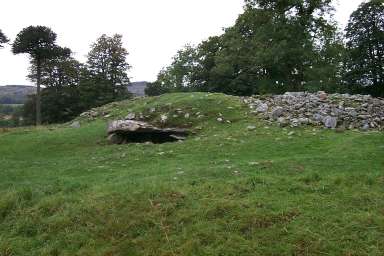
| [Home -> Armin Grewe's holidays -> Scotland 2000 -> Kilmartin Glen] [Contact] |
| After taking the afternoon ferry from Islay I didn't really want to drive too far any more. So I decided to finally visit a place I so far only had passed on previous journeys: Kilmartin Glen. I stayed at Dunchraigaig House (Kilmartin by Lochgilphead, Argyll, PA31 8RG; Tel. +44-(0)1546-605209, email: Dunchraig@aol.com), which is on the A816 approx 3 miles before the village of Kilmartin. From the room I had I could see some standing stones, how many rooms can claim that? | |
 |
 |
 |
 I would recommend Kilmartin House (located right next to the Church in Kilmartin) as the starting point to any visit to Kilmartin Glen. It houses an interpretive centre to the history of the valley as well as an excellent cafe with locally produced food. I would recommend Kilmartin House (located right next to the Church in Kilmartin) as the starting point to any visit to Kilmartin Glen. It houses an interpretive centre to the history of the valley as well as an excellent cafe with locally produced food.The museum gives you an excellent overview and insight into the long history of the valley (=glen, for those of who didn't know the Scottish term). You can also see an audiovisual display about the people who shaped the glen in the 5000 years human habitation can be traced. Kilmartin church houses some early christian crosses, while a separate enclosure in the graveyard holds one of the largest collections of medieval grave slabs in the West Highlands. |
 |
 |
| Dunchraigaig Cairn (right) and Ballymeanoch Standing Stones (above) are some of the many Neolithic and Bronze Age monuments which can be found in the glen.
Dunchraigaig Cairn is a Bronze Age Cairn with some of the covering stones removed to show three burial cists. A short walk away are the Ballymeanoch Standing Stones. There are six stones in total, set up in two roughly parallel rows of two and four stones. The tallest stone is some 4 metres high. |
 |
Previous: The Isle of Jura <- Scotland 2000 Index -> Next: Fuel Crisis
 |
Copyright © 2000-2006 Armin Grewe - FAQ |
 |